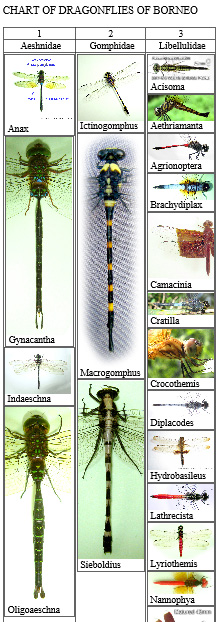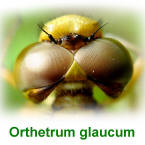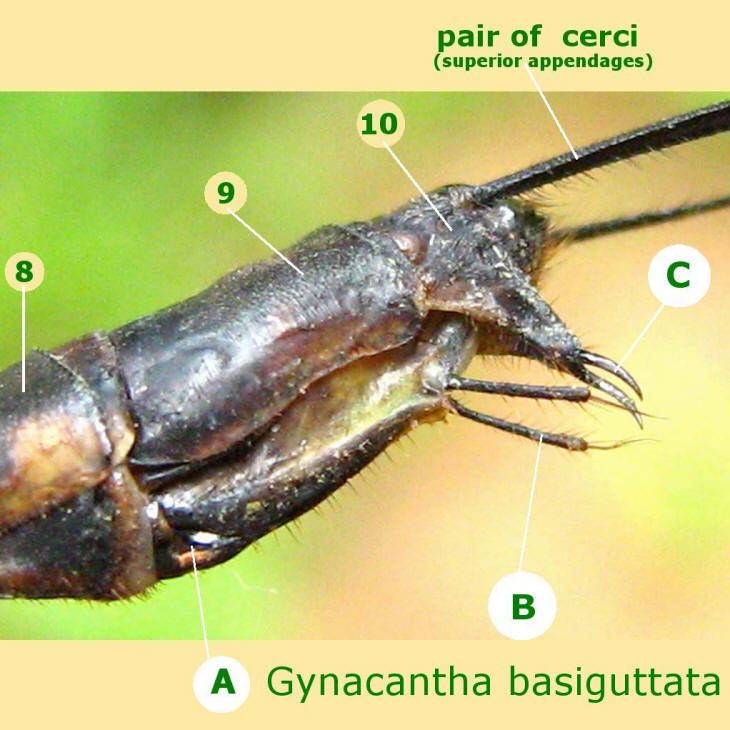
Tyriobapta torrida Kirby, 1889
Tree-hugging Dragonfly
Found in Asia: China, Indonesia, Malaysia, Peninsular Malaysia, Thailand
Last Updated on Saturday, 23 September, 2023 10:41:30 AM
INDEX > Dragonflies of Borneo > Family Libellulidae > Tyriobapta torrida Kirby, 1889

Tyriobapta torrida Kirby, 1889
Tree-hugging Dragonfly
Found in Asia: China, Indonesia, Malaysia, Peninsular
Malaysia, Thailand
Among the 3 Tyriobapta species in Borneo, the most abundant and widespread species is Tyriobapta torrida . It is the largest member of the genus and the males are recognized by the broad, slightly metallic bluish-black area at the base of the hind wings. It is found from the lowlands to about 600 m. Both sexes perch vertically on tree trunks which they defend against all comers, perhaps in order to maintain feeding territories. Tyriobapta torrida are mainly confined to forested swampy areas.
Towards the middle of the day it is common to see males racing back and forth
over small pools, chasing each other and mating with females as they arrive to
oviposit.
Tyriobapta torrida is the most widespread species among the 3 Tyriobapta species in Sabah. . It is found in the lowlands forested swampy areas.
Both male and female perch vertically on tree trunks which they defend against
all comers.
Tyriobapta torrida

This pair of Tyriobapta torrida were caught in tandem on 22 August 2007 in
National Park of Tawau.
Tyriobapta torrida is normally spotted on tree trunk in shady environment.
♂♀
For unknown reason, Tyriobapta torrida likes hugging tree trunks. Even when
disturbed, it will hover away only briefly and return just as promptly. The male
(displaying a large black patch at the base of both hind-wings) are always found
to be gregarious.

A female Tyriobapta torrida.
This is a medium size dragonfly measuring :
Hind wing span = 64mm
Whole body length = 36mm

CHART OF DRAGONFLIES OF BORNEO
RELATED TOPICS

INTRODUCTION TO THE DAMSELFLIES OF SABAH, BORNEO ISLAND
Insects are diverse and dominant inhabitants of the tropical rainforests in Borneo Island. New species are discovered too often. Entomologists are still struggling to cope with the documentation of tropical insect diversity.
Most of the common dragonflies in Sabah are red coloured, especially from the family Libellulidae. Some red pecies are even confused as same species, for example the three species of Genus Neurothemis.


The compound eyes of dragonflies
Dragonflies and damselflies have large compound eyes that can see in all directions. When the compound eye is magnified several hundred times, each individual facet (ommatidium) is shown to be hexagonal in shape.

Ovipositor (Vulvar Lamina)
of Female Dragonflies and Damselflies
Female dragonflies have either one of the two method of depositing eggs from
the abdomen:
1- using Ovipositor Structure
2- using Vulvar Lamina
Male do not have an ovipositor. Instead male dragonfly and damselfly have appendages.
|
GO FURTHER FLORA Borneo has 150 species of wild fig trees. Most of them are found in forests of Sabah. FISHERIES Prawn farming is a main commercial activities in Tawau. Spawners from Tawau are graded the best in Malaysia. For decades, Tawau has been exporting high-grade tiger prawns to several countries such as Korea, Japan, Taiwan, China, Vietnam, Singapore, Egypt and Australia. |
|
|
Damselflies of Borneo |